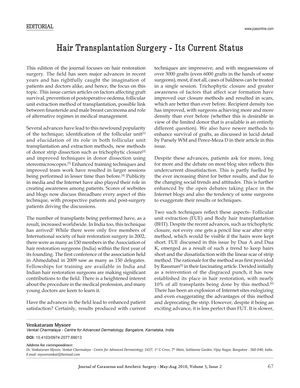Hair Transplantation Surgery: Its Current Status
January 2010
in “
DOAJ (DOAJ: Directory of Open Access Journals)
”

TLDR Hair transplantation surgery has improved, becoming more popular and efficient, but patient dissatisfaction remains due to unrealistic expectations.
In 2010, hair transplantation surgery had seen significant advancements, leading to increased popularity and improved patient outcomes. The identification of the follicular unit and the development of follicular unit transplantation (FUT) and extraction (FUE) methods, along with better donor strip dissection techniques like trichophytic closure, had allowed for larger sessions to be performed more efficiently. The number of hair transplants performed worldwide had increased, with India seeing a rise in both practitioners and interest in the field. Megasessions of over 3000 grafts, and in some cases up to 6000 grafts, had become possible, allowing for the treatment of most cases of baldness in a single session. FUE, which allows patients to keep their hair short without a visible scar, had become established despite initial skepticism, accounting for about 10% of all transplants. Body hair transplantation (BHT) had also expanded the source of grafts available. However, despite these advances, patient dissatisfaction persisted, partly due to unrealistic expectations fueled by the internet and exaggerated claims. The medical management of hair loss had seen less progress, with only two approved drugs, minoxidil and finasteride, available, each with their limitations. The need for balanced evaluation of procedures, proper patient counseling, and ethical standards in the field was emphasized to maintain the progress and reputation of hair restoration surgery.





